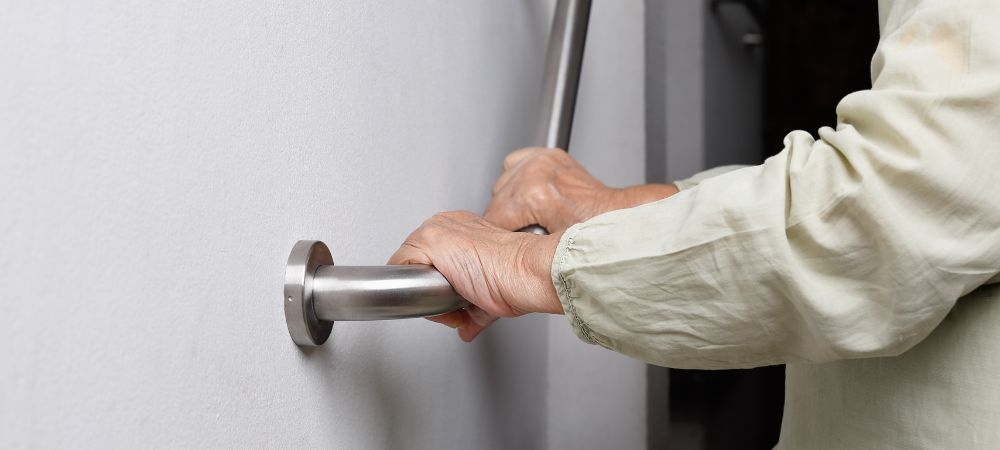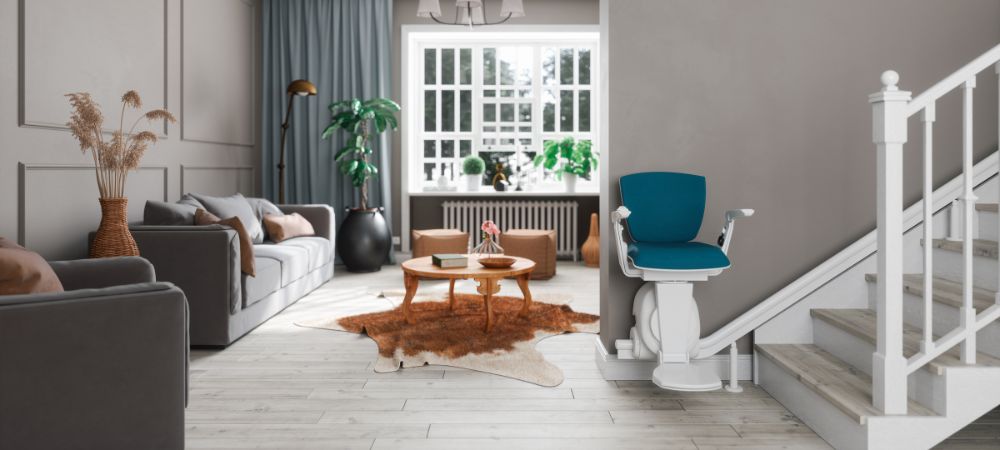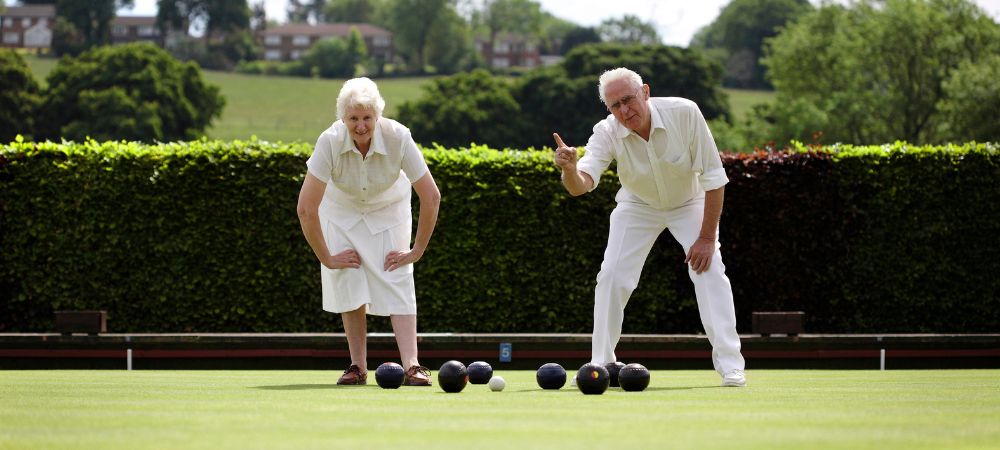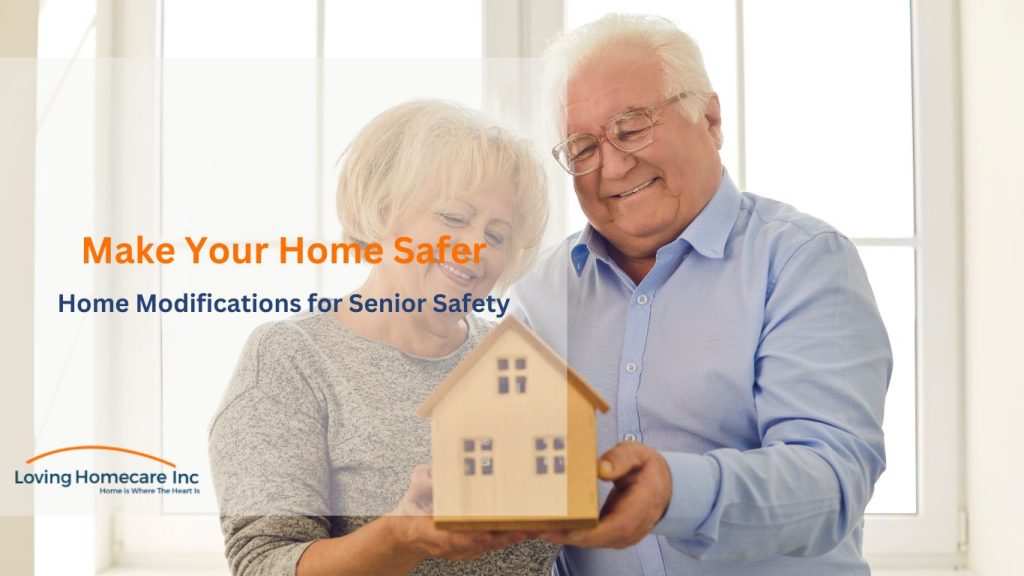As we age, the need for safe living environments becomes paramount. Home modifications for seniors can prevent falls, improve mobility, and enhance overall safety. By making essential home modifications for senior safety, families can ensure that elderly loved ones remain comfortable and independent for as long as possible.
Crucial home modifications that should be considered for elderly and disabled individuals
1. Install grab bars and handrails

Injuries from falls are one of the leading causes of hospitalizations among seniors. Bathrooms are high-risk areas due to the combination of wet surfaces and slippery floors. A highly effective modification is the installation of grab bars and handrails. For example, installing grab bars in the shower or near the toilet allows seniors to safely stand up or steady themselves without relying solely on balance.
The CDC also notes that about 80% of fall-related injuries among seniors occur at home, and the bathroom is one of the most dangerous places. Imagine a senior recovering from surgery or managing chronic health issues like arthritis. A home modifications for elderly such as grab bars in the bathroom can provide the much-needed stability
2. Modify the bathroom
The bathroom is often considered one of the most dangerous areas of the home for seniors. Slippery floors, high tubs, and low toilets can be particularly challenging. Essential home modifications for senior safety needed for bathroom safety for seniors which include installing a walk-in shower with a non-slip floor, a raised toilet seat, or a shower bench.
A senior with mobility challenges may find it difficult to step over the high edge of a bathtub. Installing a home modification for elderly such as a walk-in tub or walk-in shower will make it easier for them to maintain hygiene independently and safely.
3. Widen doorways
For seniors who use a walker, wheelchair, or cane, narrow doorways can become a serious obstacle. By widening doorways, it’s possible to create a more accessible environment that allows easy movement from room to room.
The Americans with Disabilities Act (ADA) specifies that doorways should have a minimum clear width of 32 inches to accommodate wheelchair users.
A home modification for elderly and disabled like widening the doorways, will be able to navigate through their home more easily and comfortably, using a walker or wheelchair without the fear of getting stuck.
4. Improve lighting
Poor lighting is another leading cause of accidents in the home. Seniors with diminished vision or cognitive impairments may have difficulty detecting obstacles, especially at night. By enhancing the lighting in critical areas such as stairways, hallways, and bathrooms, you significantly reduce the risk of tripping.
A study published in the Journal of the American Medical Directors Association found that upgrading lighting in care homes led to a 43% reduction in falls compared to control sites.
5. Add anti-slip flooring
Slippery floors are a common hazard in many homes, especially in bathrooms and kitchens. By replacing carpets with non-slip mats or installing safer materials such as vinyl or cork flooring, seniors can move around with more confidence and less risk of slipping.
The National Institute on Aging found that falls in the home account for more than 60% of falls in the elderly. Replacing tile or wood flooring with elderly home modifications like non-slip surfaces can significantly reduce this risk.
6. Install a stair lift

For seniors who live in two-story homes, a stair lift can be an invaluable modification. Not only does it provide mobility assistance for getting up and down stairs, but it also ensures that seniors with limited strength or balance issues do not risk a fall while navigating the stairs.
A senior who has been dealing with knee pain or has had recent surgery may find it difficult to climb the stairs. Installing a stair lift can allow them to easily access the second floor without risking injury, improving their mobility and quality of life.
7. Create accessible entrances
Ensuring that a senior’s home is accessible from the outside is another crucial modification. Installing ramps or eliminating steps from the entryway provides easier access for those who use walkers, wheelchairs, or have limited mobility.
The home modification program for seniors often helps fund the installation of ramps, widening doorways, or other accessibility adjustments to ensure seniors can enter and exit their homes safely and with ease.
8. Elevate furniture
As seniors experience reduced strength and mobility, getting in and out of low furniture becomes challenging. Elevating chairs, couches, and even the bed can make a huge difference, allowing seniors to rise easily without straining themselves.
A senior with hip or knee issues may find it painful to get up from a low sofa. By raising the furniture to a more comfortable height, they will have more control and support while sitting or standing, reducing the risk of falls.
9. Ensure kitchen accessibility
The kitchen can be a particularly hazardous space for seniors. From reaching high shelves to operating dangerous appliances, many tasks in the kitchen can be difficult for seniors to handle. Modifications such as pull-out shelves, lower countertops, and specialized care and equipment can help seniors maintain their independence. Many home modification programs for seniors may provide free home modifications for seniors or discounted emergency alert systems to assist seniors living alone.
10. Add emergency alerts
Emergency alert systems allow seniors to call for help in case of an emergency, even if they are unable to reach a phone. Wearable devices, such as necklaces or bracelets with buttons, can provide immediate access to emergency services, ensuring that help is just a button press away.
Many home modification programs for seniors may provide free or discounted emergency alert systems to assist seniors living alone.
11. Secure the outdoors

Making the outdoor space safer is just as important as modifying the indoor environment. elderly home modifications like installing smooth walkways, adding ramps, and ensuring proper lighting outside can prevent falls in gardens or along driveways.
A senior loves to walk in their garden but has difficulty navigating uneven paths. Installing a smooth, non-slip walkway will make it easier for them to move around outdoors without fear of falling.
Conclusion:
Home modifications for seniors are essential for creating a safer, more comfortable living environment. By implementing these 11 key modifications, such as installing grab bars, improving lighting, and making the kitchen more accessible, families can significantly reduce the risk of falls and other accidents, allowing elderly loved ones to maintain their independence and quality of life.
If you’re searching for home modification for elderly, then visit Loving Homecare Inc, where we are committed to improving the safety and well-being of seniors with practical, affordable solutions.

